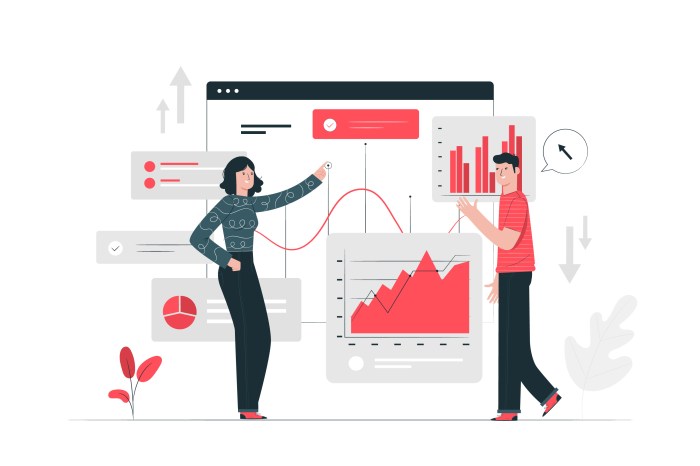Using Surveys for Customer Insights dives deep into the world of understanding consumer behavior through engaging survey techniques. From uncovering hidden preferences to enhancing products and services, surveys play a vital role in decoding the minds of customers.
When it comes to gathering valuable insights, surveys are the ultimate tool for businesses looking to stay ahead in the competitive market landscape. Let’s explore the realm of customer feedback and how surveys pave the way for impactful decision-making.
Importance of Surveys in Understanding Customer Insights
Surveys play a crucial role in helping businesses gain valuable insights into customer behavior, preferences, and opinions. By collecting feedback directly from customers, companies can make informed decisions to improve their products, services, and overall customer experience.
Enhancing Customer Understanding
- Surveys provide a direct line of communication with customers, allowing businesses to gather feedback on various aspects of their products or services.
- Through surveys, businesses can understand customer preferences, pain points, and expectations, helping them tailor their offerings to meet customer needs effectively.
- By analyzing survey responses, businesses can identify trends, patterns, and areas for improvement, enabling them to make data-driven decisions to enhance customer satisfaction.
Driving Product and Service Improvements
- Surveys help businesses identify areas of improvement in their products or services based on customer feedback, leading to enhanced product development and service delivery.
- Customer feedback obtained through surveys can highlight specific features or aspects that customers value most, guiding businesses in prioritizing product enhancements or service upgrades.
- Continuous feedback through surveys enables businesses to iterate on their offerings, ensuring that they stay relevant and competitive in the market.
Types of Surveys for Collecting Customer Insights
When it comes to collecting customer insights, there are several types of surveys that businesses can utilize to gather valuable information. Each type of survey offers unique benefits and can provide different perspectives on customer preferences and behaviors.
Online Surveys
Online surveys are a popular method for collecting customer insights due to their convenience and cost-effectiveness. By sending out surveys via email or posting them on social media platforms, businesses can reach a wide audience and gather feedback quickly. Online surveys also allow for easy data analysis and can provide real-time results, making it easier to track trends and make informed decisions based on customer feedback.
In-Person Interviews
In-person interviews offer a more personal approach to collecting customer insights. By conducting face-to-face interviews with customers, businesses can gather detailed feedback and delve deeper into customer preferences and opinions. In-person interviews also allow for non-verbal cues to be observed, providing additional insights that may not be captured through other survey methods.
Phone Surveys
Phone surveys involve contacting customers directly via phone to gather feedback. While less common than online surveys, phone surveys can be effective in reaching customers who may not have access to the internet or prefer to provide feedback over the phone. Phone surveys also allow for immediate clarification of responses and can help businesses establish a more personal connection with customers.
Quantitative vs. Qualitative Surveys
Quantitative surveys focus on collecting numerical data and measuring customer preferences through structured questions with predefined answer options. These surveys are useful for gathering statistical insights and identifying trends among a large sample of customers. On the other hand, qualitative surveys involve open-ended questions that allow customers to provide detailed feedback and insights in their own words. Qualitative surveys are valuable for capturing nuanced customer preferences and understanding the underlying reasons behind their choices.
Designing Effective Survey Questions

Crafting survey questions that yield valuable customer insights is crucial for gathering accurate and relevant data. By using clear and concise language, survey questions can effectively capture the opinions and preferences of customers. It is important to avoid bias and leading questions to ensure the survey results are unbiased and truly reflect the customers’ thoughts.
Tips for Crafting Effective Survey Questions
- Keep questions simple and easy to understand to avoid confusion.
- Avoid using jargon or technical language that may be unfamiliar to respondents.
- Use closed-ended questions with multiple-choice answers to gather quantitative data.
- Include open-ended questions to allow respondents to provide detailed feedback and insights.
Importance of Clear and Concise Language
Using clear and concise language in survey questions is essential to ensure that respondents understand the questions correctly. Ambiguous or vague language can lead to misinterpretation and inaccurate responses. By being clear and to the point, survey questions can elicit honest and accurate feedback from customers.
Avoiding Bias and Leading Questions
When designing surveys, it is crucial to avoid bias and leading questions that may influence respondents’ answers. Bias can skew the survey results and lead to inaccurate conclusions. To prevent bias, ensure that survey questions are neutral and unbiased, allowing respondents to provide their honest opinions without any external influence.
Analyzing Survey Data for Actionable Insights: Using Surveys For Customer Insights

When it comes to analyzing survey data, there are several steps involved in extracting meaningful insights that can drive decision-making for businesses.
Identifying Key Metrics
- After collecting survey responses, the first step is to identify the key metrics that are most important for your business objectives.
- These metrics could include customer satisfaction scores, Net Promoter Scores (NPS), or specific feedback related to product features or services.
- By focusing on these key metrics, you can prioritize your analysis and uncover valuable insights.
Cleaning and Organizing Data, Using Surveys for Customer Insights
- Once you have identified the key metrics, the next step is to clean and organize the survey data to ensure accuracy and consistency.
- This involves removing any duplicate responses, correcting errors, and structuring the data in a way that is easy to analyze.
- By cleaning and organizing the data, you can avoid misleading conclusions and ensure that your insights are based on reliable information.
Utilizing Data Visualization Techniques
- Data visualization techniques play a crucial role in presenting survey results in a clear and impactful way.
- Charts, graphs, and dashboards can help businesses visualize trends, patterns, and correlations within the survey data.
- By using visuals to represent the data, businesses can quickly identify key insights and communicate them effectively to stakeholders.
Making Informed Decisions
- Businesses have successfully used survey data to make informed decisions across various areas, such as product development, marketing strategies, and customer service improvements.
- For example, a company may analyze survey feedback on a new product feature to determine whether it meets customer expectations or needs further refinement.
- By leveraging survey data, businesses can align their strategies with customer preferences and enhance overall satisfaction and loyalty.









